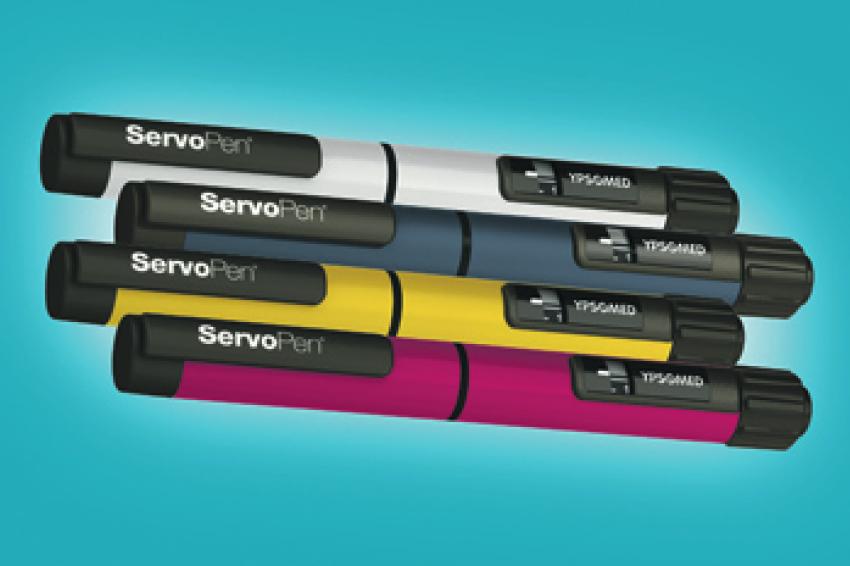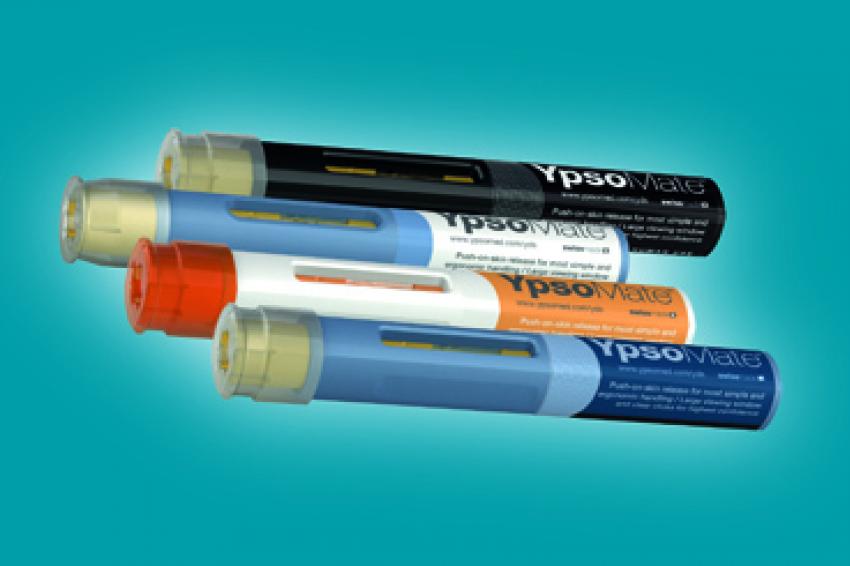Developments of Drug Delivery Devices are Increasingly Focused on Patients’ Needs
11.04.2013 -
Delivery Boom - Drug Delivery Devices currently rank among the major pharmaceutical trends. Their optimization is largely influenced by the pharmaceutical industry, physicians and patients. Development of new devices is increasingly focused on patients' needs. They give top priority to simplified handling, reduced pain, continuous documentation and facilitated adherence to medication intervals.
A precise definition of Drug Delivery Devices (DDDs) is almost impossible to find. In general, DDDs support the transportation of active ingredients to the part of the body where they are needed and therefore can be considered an application facility. Whether they are defined as pharmaceuticals or medical products depends on their purpose. For example, a powder inhaler qualifies as a pharmaceutical, while a catheter dissected with heparin qualifies as a medical product.
Pen Systems: Close to Perfection
Because of a significant refinement of most DDDs in recent years, for some appliances little potential for improvement is left. The introduction of pen systems in 1985 considerably enhanced patients' quality of life. Pens are loaded using cartridges and usually serve as multiple application systems. Several functionalities such as level indication and haptic of pen systems already have been optimized. Moreover, today's pen systems feature electronic components such as memory control, which is mainly an application for children.
Further refinement will focus on easier and safer handling, such as improved needle protection to help avoid injuries and unintended application. The optimization of other parenteral systems also focuses on the patients' compliance, reflecting the awareness of fears such as needle phobia. Auto injectors are usually loaded using pre-filled syringes and feature a needle cover keeping the needle hidden as long as possible. This often helps users overcome fears of self-injection. Diseases such as multiple sclerosis, osteoporosis, hepatitis, rheumatism and anemia are typical fields for the application of auto injectors. Treatment of these requires a singular dose or regular administration during longer intervals and is profitable from the industry's point of view. Therefore, intensive development of auto injectors is justified not only to improve patients' quality of life but also from an economic perspective.
Further advancements mainly refer to production conditions. With optimized materials and designs, production costs will decrease.
As a result, devices are no longer too expensive to be applied as reusable items. Some experts believe needle-free injection technology will soon be successful. One of the reasons is the vaccine campaign launched by the World Health Organization (WHO). However, the pharmaceutical market remains cautious of these systems because they are believed to cause similar pain as a puncture does.
Transdermal Devices: More Convenience
Transdermal delivery devices are patch systems containing active agents, for instance within matrices, which are diffused through the skin. Recent developments have led to optimized patch sizes and adherence features of the patches for better skin tolerance.
The Western world's affinity for electronic devices is also influencing pharmaceutical applications. Exciting new developments comprise a combination of patch and pump, so-called "patch pumps." For example, the Pancreum BetaWedge insulin pump is a small device with a Bluetooth-enabled Personal Diabetes Analyzer (PDA). It adheres to the skin and delivers insulin for as long as three days. Electronic devices such as technologically suitable MP3 players and memory cards enable easy and convenient measurement of the blood sugar level. With "MyDose," Roche is developing a single-use infusion device for the subcutaneous delivery of a new drug formulation containing monoclonal antibodies such as Herceptin and MabThera. The subcutaneous delivery is based on the patient's individual bodyweight or surface.
It is easier to administer, and application times are significantly reduced. The main functional component of the device is the "Vartridge," a hybrid container that combines the features of glass vials and cartridges and is controlled via the electronics in the pump. As opposed to intravenous applications, patients no longer need to be treated in hospitals and are more independent in their everyday routine.
Pulmonary Systems: Focus on Asthma and COPD
Inhalable insulin seemed to hold a lot of promise. But the large size of the inhaler, increased treatment costs and the requirement for much higher insulin doses led to its withdrawal. The market for pulmonary systems has noticeably slowed down in developed countries while it is still growing in emerging markets. Yet pharmaceutical engineers continue with the advancement of these systems mainly with respect to asthma and COPD (chronic obstructive pulmonary disease). There are three different types of pulmonary systems. MDI (metered dose inhaler) is the most common technology in the market at low cost level, especially for emergency products. The aerosol-based inhaler delivers the required amount of gaseous medicine to the lungs. New products, however, are rarely developed in the form of MDIs for environmental and compliance reasons such as patients' coordination problems between breathing and actuation.
The technology of the future - if no oral medication is available - is the DPI (dry powder inhaler) with its simple application and small size. Medication is delivered to the lungs in the form of dry powder, which patients inhale without any solvent.
The third pulmonary system is the nebulizer, which administers the inhalation liquid in the form of fine drops. Patients inhale the medication as a mist generated by different technologies such as ultrasound, piezo crystals or vibrating mesh.
DDDs: Simplifying the Lives of Patients
Many established medical devices, and especially applications for children, have been significantly optimized over the past years. Some of them are approaching their improvement limits; others still have potential for refinement. In general, the equipment tends to be smaller, and handling is safer, easier and more convenient. At the same time, costs are decreasing for those devices that hardly require any further improvement. In many fields, the market will not work without DDDs. The compatibility of a device such as a pen, an auto injector or a pump with a new drug is an important precondition for its success, especially in developed countries. The so-called "pharmerging markets" require more basic and affordable technologies. Once the average unit cost decreases, the optimized DDDs will also be successfully placed in these markets in large numbers. The trend toward more convenience with a clear focus on patients' compliance is expected to continue at a smart pace.
Kontakt
Robert Bosch GmbH
Blaufelder Str. 45
74564 Crailsheim
Deutschland
+49 7951 402 0
+49 7951 402 340















